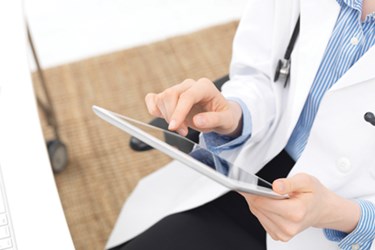Mobile Disruption Births New Care Models According To Stanford Children's CMO
By Megan Williams, contributing writer

Across most of healthcare’s history, care models have been heavily dictated by caregivers and government decisions. The advent of new technologies though, is changing everything.
Telehealth and mobile — including digital tools such as wearables, RFID, and Wi-Fi connected devices — will be instrumental in the proliferation of value based care. FierceHealthcare took some time to speak with Stanford Children’s Health Chief Medical Officer, Dennis Lund, about these changes.
Lund believes many of the changes we’ll see will pivot on the ability these devices have to generate continuous streams of information to physicians and nurses, cutting the need for repeat office visits and in some cases, even admissions. FierceHealthcare summarized some of the key points of the two-part interview for you here.
Silicon Valley Leading The Way
Lund, who serves as an associate dean for maternal and child health at Stanford School of Medicine, sees Silicon Valley as playing a particularly important role in innovation. He gives the example of a new smartphone application that gives diabetic patients the ability to continuously track blood sugar levels, and also share that data with their physician in real time. The app was developed as a result of collaboration between a physician at Lucile Packard’s Children’s Hospital Stanford and Apple’s HealthKit team in Cupertino. The information is imported directly into the patient’s EMR giving their medical team the ability to “fine-tune their insulin dosage” and better control blood sugar.
His hospital is also particularly close to Google, giving them the opportunity to participate in Google Baseline Study, a collaboration between the ubiquitous tech leader, Stanford Medicine, and Duke University, that is tracking 10,000 individuals in a longitudinal cohort to help identify and study risk factors for disease and relapse of disease.
Regulations And Laws Lagging
Lund made sure to stress the importance that digital tools will play in these developments. He believes mobile is just getting started in the changes it will make over the next five to 10 years, but the regulatory and legal environments have yet to catch up with the reality of telehealth and mobile health changes. He also stresses the fact EHRs still aren’t quite where they were expected to be.
“Still, the promise of the electronic health record has yet to be met. For the most part, we use it as a glorified data repository rather than using it to help manage patient care in real time. I believe this will come fairly soon, however. One of the basic problems in healthcare today is that medical knowledge is increasing so quickly that it is difficult for physicians and nurses to keep up. In the not-too-distant-future, our EHRs will mine data in real-time, including vital signs, blood test or x-ray results, as well as suggest potential treatment pathways to clinicians using large cloud-based data sets of information.”
Lund had watched all of these technologies work together to help build the beginnings of a learning health system at Stanford Children’s and believe that new models of care growing out of them will help move the industry away from a system based on billable encounters, and into one that reduces burdens on patients while keeping the economics of the system sound.
